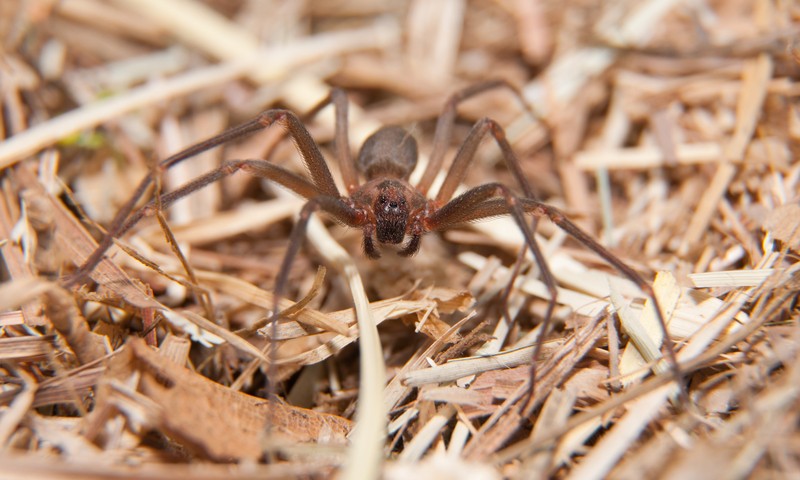The process of deciding how to treat a venomous spider bite starts with identifying the type of spider that bit you and then assessing whether you need a doctor or if you have anti-venom (for black widow bites) whether to apply it.
Below is the process for determining what type of bite is and how to treat it.
1. Evaluate the Pain
If you feel pain when the spider bites, it’s likely a black widow spider bite.
A brown recluse spider bite is a slight sting at best. Most of the time you feel nothing.
A hobo spider’s bite feels similar to a brown recluse’s.
2. Look at the Skin Damage
That’s the key to the brown recluse spider bite. You may not know when it bit you, but the bite area becomes red, blistered, or black. The area starts out small, and the redness spreads. A black spot of dead tissue develops in the middle of the redness.
The hobo spider can cause skin damage, but less so than the brown recluse.
The black widow spider bite causes a red spot that’s sometimes hard to see. It can cause plenty of muscle aches and cramping throughout the body for one to three weeks.
3. Poisonous Spider Bite Treatment:
If at all possible, get to a doctor. If you can’t, consider the following:
If you think the spider was a brown recluse or hobo spider:
Keep the wound cool and slow your breathing. This will help slow the venom’s spread: Apply ice, and keep the area at heart level or above.
The next step you need to do is make sure you do everything possible to prevent infection.
As the black layer of dead skin (eschar) sloughs off, treat the wound as you would any other.
Treat the pain. Take an over-the-counter pain reliever.If you think the spider was a black widow take a pain reliever like ibuprofen or aspirin for the muscle cramps.
Within minutes to hours, a black widow bite can lead to severe chest and abdominal pain mimicking appendicitis or a heart attack. It can make your blood pressure go up and may need to be treated. (Possible signs include an quickened pulse and a flushed face.)
Every step you can take in a survival situation to avoid making your situation tougher is obviously the best strategy and with spiders, being careful in the areas listed here are the easiest way to avoid a bite.
If you do get bit, however, assess and then treat.
For more information on poisonous spiders, please visit Survival Life.

Jennifer Burke
I ain’t getting close enough to one it to bite me lol
1st step- step on spider
Cyerra Wilburn here honey
Jason… What kind of deal can you get me on a Surplus Flame thrower?
Will you… suck out the poison??!!
Kill it first. Problem solved.
Go to the doctor….never would have thought of that…..
ALL spiders are venomous. There are varying degrees of intensity with the venom, and obviously some of them don’t have fangs long enough to cause any damage to humans..
Debra Henry-Queen
It wont suck itself….lol
Lonie Bamburg
Trish Akridge
Widows are rare? Hahaha! I could point out at least a dozen that live on the outside of my house and three in my garage.
Molly Thompson
Brown recluse bites need to be lanced and the venom removed, long stringy 2x, thing to stop from spreading and getting worse